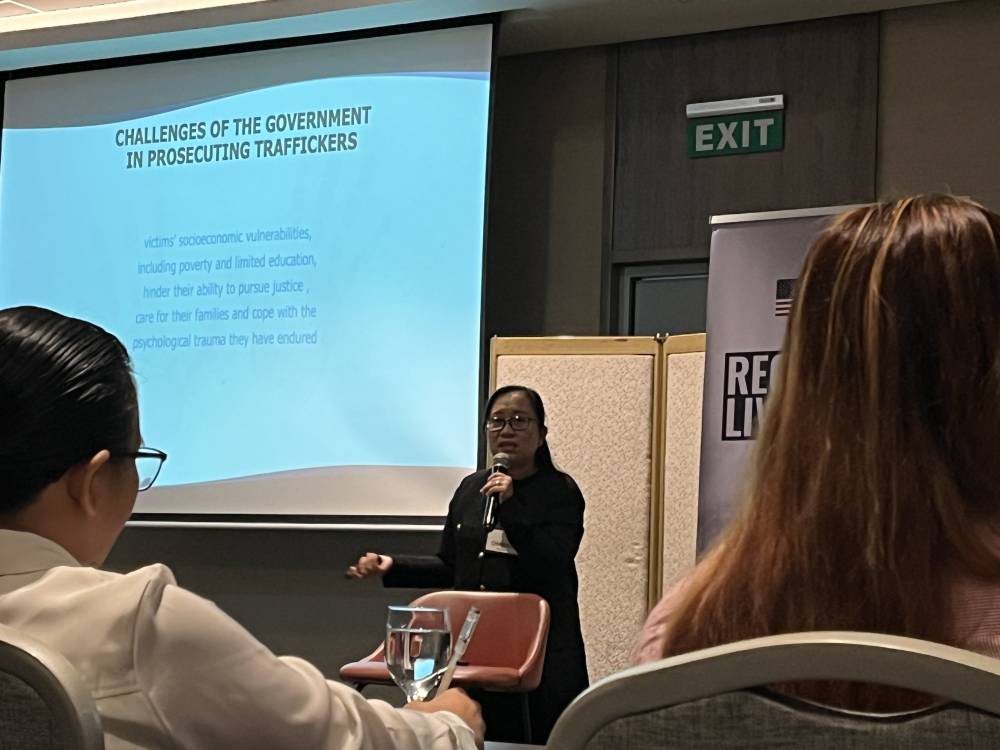Challenges remain in prosecuting trafficking cases

(Last of two parts)
BACOLOD CITY—When notorious Australian pedophile Peter Scully and his coaccused Carmie Ann Alvarez pleaded not guilty to harboring two minors, chaining and detaining them for sexual exploitation, their victims could not understand why.
“The two minors were crying, asking: ‘Why did they say not guilty? It’s the two of them who did it,’” recalled Cagayan de Oro City prosecutor Charisse Galarrita-Bitoon, who handled that case.
She remembered telling them: “Langa, as I have explained before, they will always say not guilty.”
“But they cannot understand that. The children were hurt,” Galarrita-Bitoon told journalists on Sept. 12 during a seminar on human trafficking organized by the US Embassy.
The case dates back to 2014, when Alvarez befriended the girls at a mall, bought them hotdogs and persuaded them to go with her, promising to provide for their needs, before taking them to Scully’s house.
There, the girls were fed, bathed and given biscuits and alcoholic drinks that left them drunk.
They were then sexually abused, with one of them even ordered to dig a hole on the ground while both were still naked with chains around their necks.
Days later, when Scully and Alvarez left the house, the girls managed to escape by climbing over the fence.
More than a decade has passed since that harrowing experience. The two survivors are now in college, pursuing nursing and psychology, slowly rebuilding their lives. In 2024, the Supreme Court affirmed the conviction of Scully and Alvarez.
Scully’s case, Galarrita-Bitoon said, became the driving force behind the establishment of a justice zone in Cagayan de Oro City last year.
It also highlighted the grueling process of prosecuting trafficking cases involving children, where state lawyers deal with defense dilatory tactics and the retraumatization of child witnesses during trial, among other challenges.
Part of the struggle, she added, is securing cooperation from internet companies and financial institutions in providing information related to sex trafficking crimes—echoing similar concerns raised by Department of Justice (DOJ) officials and groups like the International Justice Mission (IJM).
The Philippines is one of the world’s largest known sources of online sexual abuse and exploitation of children (OSAEC), where traffickers livestream the sexual abuse of minors in exchange for payments wired from abroad, often from Australia, Canada, the United Kingdom, the United States, and other European countries.
IJM’s Rebelander Basilan explained how OSAEC works: there are two perpetrators—locals who have access to children and offenders from abroad who would pay to “direct the kind of sexual abuse to be inflicted on the child.”
The abuse is livestreamed with payments sent via money transfer services.
“We have a very well established money transfer system and that’s also being taken advantage of by these offenders to exchange money for the abuse of a child, a Filipino child,” Basilan said. He also noted that online payments have minimal safeguards.
IJM’s 2022 study estimated that nearly half a million Filipino children were trafficked to produce new sexual exploitation material.
Basilan said it is “relatively very easy” to livestream abuse, requiring only internet access and a device like a smartphone.
For 10 straight years, the Philippines has maintained its Tier 1 status in the US Department of State’s Trafficking in Persons Report, meaning the government meets the minimum standards to combat trafficking.
The latest report, released last week, noted that Philippine law enforcement had made numerous subpoena and financial transaction requests under the amended antitrafficking law of 2022.

















